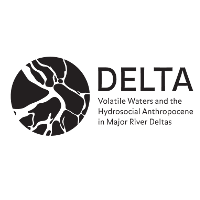Mollusc Lifewords: Gleaning, Rhythm and Relation in the Sine-Saloum Delta, Senegal
In Sine-Saloum Delta, Senegal, molluscs are everywhere. They mediate quotidian practices and basic needs as well as relation, memory and meaning. Delta inhabitants interact with them mainly through gleaning, manufacturing, consumption, trading and governing, but also through everyday movements, visual and auditive engagement. Furthermore, molluscs foster communication between ancestral spirits and humans, and their shells are used for roads, dams, houses, incense, jewelry, amulets, as future-telling devices and, formerly, for pottery and medicine.
Key to the continuation of human–mollusc relations was and is the gleaning for molluscs in the mangroves and on the sandbanks of the Sine-Saloum Delta. Gleaning has a longstanding history in the delta, yet has also undergone profound changes in recent decades that relate to and mirror the region’s socio-political, environmental and economic transformations. The delta has long been a so called hypersaline inverse estuary with little fresh water reaching the sea and with high salinity levels upstream due to evaporation, but from at least the 1950s on, the rain massively diminished (Pagès and Citeau 1990). This again has entailed salinization, siltation, subsidence, erosion as well as freshwater shortage and led to a drying up of terrestrial resources such as rice or oil palms. In reaction, delta dwellers (mostly Serer Niominka in the northern part and Soce Mandinka in the southern part) started to embrace a more and more aquatic lifestyle comprised mainly by fishing and transporting (men) or mollusc gleaning (women), which today is the most important female livelihood activity in the delta. At the same time, delta dwellers continue to invoke their "12 professions" beyond expertise and into attunement with ecological rhythms, and practice a degree of flexibility regarding the execution of their work practices. So too with gleaning.
In my dissertation, I trace the emergence of female mollusc-gleaning to its present form(s) and examine its (social) organization as well as the phenomenology of the practice itself. I am interested in gleaning as a "minor tactic" that both affirms and decenters socio-economic hierarchies by remaining "marginally Other" while creating an "invisible" surplus. I then inquire into residents' gleaning as a "minor tactic" in resistance to attempts by the state and NGOs to regulate and "develop" gleaning according to conservation and market principles, or to partially replace it with cultivation (e.g., through oyster parks). The art of gleaning thus also becomes an art of not getting domesticated.
I then elaborate on how gleaning beyond fixed quotas, objects to be produced, tasks to be accomplished, or strict time constraints, intertwines action and pause, engagement and omission, and plan and situated action, and remains always partial and gradual, but at the same time directed and skillful, and is a 'gleaning for' rather than a 'gleaning of'. Gleaners roughly, but not strictly, follow the tides and embrace the off-times when they do not go into the sea very consciously for social and personal reproduction. The gleaners are thus intertwined with and co-constitute a deltaic rhythmicity; a rhythmicity that encompasses humans and non-humans and produces relationship and possibility through movement, pattern, and variety. Such rhythmic gleaning goes beyond producing or cultivating, but is lucrative, helps people create generative continuity amid increasing volatility, and co-constitutes social organization in the delta and beyond.
From mollusc gleaning and in 'following the thing and being' I then further trace some of the contemporary and past deltaic relationships between humans, spirits and molluscs and inquire their material, socio-economic as well as their experiential and symbolic-semiotic dimension. I work out how sea snail trading helped women to build institutions out of the ruins of industrial fishing and follow the trade of molluscs for consumption and the feet of certain sea snails for incense. I sketch the history of shells used for infrastructuring and how today, in the absence of the state, they are used for damming against seawater intrusion – and how this again collides with conservation legislation and tourism. Or I assess how molluscs act as mediators between humans and (ancestral) spirits and how their shells are employed for protection or as future telling devices.
My methodological approach to these multiple human-spirit-mollusc relationships is based in thick participation, i.e. apprenticeship and practice, conversation and observation, lived experience and sensuous research (Spittler 2001) and accompanied by a multimodal practice comprised of audio/visuality and creative writing. Thereby, I also draw from several experimental artistic works that play with de- and re-assemblage in the quest of forging ways beyond stable or ethno- and anthropocentric audio/visual and textual representations of a deltaic lifeworld in flux.
This sub-project is run by Sandro Simon. He formerly focused on the Tana Delta (Kenya) but had to cease research due to security concerns.
